#Kenya National Team
Explore tagged Tumblr posts
Text
2024 olympians representing non birth nation by country part 9
South Sudan: Sunday Dech, basketball (Ethiopia); Wenyen Gabriel, basketball (Sudan); Carlik Jones, basketball (U.S.A.); Anyiarbany Makoi, basketball (Egypt); Anunwa Omot, basketball (Kenya); Marial Shayok, basketball (Canada) & J.T. Thor, basketball (U.S.A.) Spain: Yulenmis Aguilar, athletics (Cuba); Mohamed Attaoui, athletics (Morocco); Alexandrina Barbosa, handball (Portugal); Polina Berezina, gymnastics (Russia); Lorenzo Brown, basketball (U.S.A.); Cristina Bucșa, tennis (Moldova); Juana Camilión, basketball (Argentina); Elvin Canales, athletics (Honduras); Marcus Cooper, canoeing (U.K.); Andy Criere, surfing (France); Thierno Diallo, gymnastics (Guinea); Jordan Díaz, athletics (Cuba); Tessy Ebosele, athletics (Morocco); Martin Faměra, water polo (Czech Republic); Megan Gustafson, basketball (U.S.A.); Jennifer Gutiérrez, handball (Switzerland); Lilou Lluís, swimming (France); Majida Maayouf, athletics (Morocco); Adel Mechaal, athletics (Morocco); Joaquín Menini, field hockey (Argentina); Tristani Mosakhlishvili, judo (Georgia); Thierry Ndikumwenayo, athletics (Burundi); Tariku Novales, athletics (Ethiopia); Abdessamad Oukhelfen, athletics (Morocco); Alisa Ozhogina, swimming (Russia); Felipe Perrone, water polo (Brazil); Enmanuel Reyes, boxing (Cuba); Leslie Romero, climbing (Venezuela); Nikoloz Sheradishvili, judo (Georgia); Lysa Tchaptchet, handball (Cameroon); Florian Trittel, sailing (Switzerland); Carmen Weiler, swimming (Singapore) & Miguel Zapata, gymnastics (Dominican Republic) Sri Lanka: Kyle Abeysinghe, swimming (U.S.A.) Sudan: Yaseen Abdalla, athletics (U.S.A.) & Ziyad Saleem, swimming (U.S.A.) Suriname: Irvin Hoost, swimming (U.S.A.) Sweden: Tyra Axnér, handball (Germany); Armand Duplantis, athletics (U.S.A.); Suldan Hassan, athletics (Somalia); Marlena Jawaid, pentathlon (Bulgaria) Felix Möller, handball (Germany); Björn Seeliger, swimming (Germany) & Sofia Sjöborg, equestrian (U.K.) Switzerland: Tadesse Abraham, athletics (Eritrea); Alexandre Dällenbach, pentathlon (France); Nikita Ducarroz, cycling (France); Helen Eticha, athletics (Ethiopia); Angelica Moser, athletics (U.S.A.); Jenjira Stadelmann, badminton (Thailand); Felix Svensson, athletics (Sweden); Albane Valenzuela, golf (U.S.A.) & Felix Vogg, equestrian (Germany) Syria: Lais Najjar, gymnastics (U.S.A.) Tajikistan: Somon Makhmadbekov, judo (Russia) & Viktor Rassadin, wrestling (Russia) Thailand: Jai Angsuthasawit, cycling (Australia); Tanya Prucksakorn, shooting (U.S.A.) & Joseph Weston, sailing (U.K.) Togo: Naomi Akakpo, athletics (France) Tonga: Noelani Day, swimming (U.S.A.) Trinidad & Tobago: Dylan Carter, swimming (U.S.A.); Zuri Ferguson, swimming (U.S.A.); Sanaa Frederick, athletics (U.S.A.); Sole Frederick, athletics (U.S.A.) & Jaden Marchan, athletics (U.S.A.) Tunisia: Jamila Boulakbech, swimming (France); Selma Dhaouadi, rowing (France); Salim Jemai, canoeing (France) & Sarra Mzougui, judo (Italy) Turkey: Vedat Albayrak, judo (Kazakhstan); Adem Asil, gymnastics (Egypt); Yasmani Copello, athletics (Cuba); Meliha İsmailoğlu-Diken, volleyball (Bosnia & Herzegovina); Kaan Kigen-Özbilen, athletics (Kenya); Kayra Özdemir, judo (France); Buse Savaşkan, athletics (Cyprus); Melissa Vargas, volleyball (Cuba) & Mihael Žgank, judo (Slovenia) Uganda: Sgt. Rebecca Ayeko, athletics (Kenya); Mercyline Chelanga, athletics (Kenya); Gloria Muzito, swimming (Sweden) & Jesse Ssengonzi, swimming (U.S.A.) Ukraine: Olena Kostevych, shooting (Russia); Olena Kryvytska, fencing (Russia); Perviz Nesibov, wrestling (Azerbaijan) & Maksym Talovierov, soccer (Russia) UAE: Aram Grigoryan, judo (Russia); Bishreltiin Khorloodoi, judo (Mongolia); Dzhafar Kostoev, judo (Russia); Magomedomar Magomedomarov, judo (Russia); Bayanmönkhiin Narmandakh, judo (Mongolia) & Nugzar Tatalashvili, judo (Georgia) Uruguay: Baltazar Amaya, rugby (Argentina)
#Celebrities#Sports#National Teams#U.S.A.#U.S.#Sudan#Basketball#Ethiopia#Egypt#Kenya#Canada#Spain#Races#Cuba#Morocco#Portugal#Russia#Tennis#Moldova#Argentina#Honduras#Boats#U.K.#France#Guinea#Czech Republic#Switzerland#Hockey#Fights#Georgia
2 notes
·
View notes
Text
Conquering Heights A Thrilling Fusion of Abseiling, Rock Climbing, and Adventure at Mount Longonot National Park
Elevating Fitness: Abseiling, Rock Climbing, and Adventure at Mount Longonot National Park In the heart of Kenya’s awe-inspiring landscapes, adventure enthusiasts are met with a thrilling challenge that combines both adrenaline-pumping excitement and physical prowess: the fusion of abseiling and rock climbing. With towering cliffs, rugged terrains, and breathtaking views, Kenya offers the perfect…

View On WordPress
#Aberdare Ranges#abseiling and rock climbing in Kenya#abseiling benefits#adrenaline rush activities#adventure fitness#balance and coordination#Chyulu Hills#fitness adventure in Kenya#fitness challenges#Hell&039;s Gate National Park#Kenyan landscapes#Lukenya Hills#mental resilience training#Mount Longonot National Park#nature immersion#outdoor workouts#rock climbing advantages#scenic climbing#team collaboration#unique fitness activities
0 notes
Text
As a helicopter hovers close to an elephant, trying to be as steady as possible, an experienced veterinarian cautiously takes aim. A tranquilizer dart whooshes in the air, and within minutes the giant mammal surrenders to a deep slumber as teams of wildlife experts rush to measure its vitals and ensure it’s doing ok. Kenya is suffering from a problem, albeit a good one: the elephant population in the 42-square-kilometer (16-square-mile) Mwea National Reserve, east of the capital Nairobi, has flourished from its maximum capacity of 50 to a whopping 156, overwhelming the ecosystem and requiring the relocation of about 100 of the largest land animals. It hosted 49 elephants in 1979. According to the Kenya Wildlife Service Director General Erustus Kanga, the overpopulation in Mwea highlighted the success of conservation effort s over the last three decades. “This shows that poaching has been low and the elephants have been able to thrive,” Kanga said. Experts started relocating 50 elephants last week to the expansive 780-square-kilometer (301-square-mile) Aberdare National Park in central Kenya. As of Monday, 44 elephants had been moved from Mwea to Aberdare, with six others scheduled for Tuesday.
156 notes
·
View notes
Text
"The world’s coral reefs are close to 25% larger than we thought. By using satellite images, machine learning and on-ground knowledge from a global network of people living and working on coral reefs, we found an extra 64,000 square kilometers of coral reefs — an area the size of Ireland.
That brings the total size of the planet’s shallow reefs (meaning 0-20 meters deep) to 348,000 square kilometers — the size of Germany. This figure represents whole coral reef ecosystems, ranging from sandy-bottomed lagoons with a little coral, to coral rubble flats, to living walls of coral.
Within this 348,000 km² of coral is 80,000 km² where there’s a hard bottom — rocks rather than sand. These areas are likely to be home to significant amounts of coral — the places snorkelers and scuba divers most like to visit.
You might wonder why we’re finding this out now. Didn’t we already know where the world’s reefs are?
Previously, we’ve had to pull data from many different sources, which made it harder to pin down the extent of coral reefs with certainty. But now we have high resolution satellite data covering the entire world — and are able to see reefs as deep as 30 meters down.
We coupled this with direct observations and records of coral reefs from over 400 individuals and organizations in countries with coral reefs from all regions, such as the Maldives, Cuba and Australia.
To produce the maps, we used machine learning techniques to chew through 100 trillion pixels from the Sentinel-2 and Planet Dove CubeSat satellites to make accurate predictions about where coral is — and is not. The team worked with almost 500 researchers and collaborators to make the maps.
The result: the world’s first comprehensive map of coral reefs extent, and their composition, produced through the Allen Coral Atlas.
The maps are already proving their worth. Reef management agencies around the world are using them to plan and assess conservation work and threats to reefs...
In good news, these maps are already leading to real world change. We’ve already seen new efforts to conserve coral reefs in Indonesia, several Pacific island nations, Panama, Belize, Kenya and Australia, among others."
-via GoodGoodGood, May 2, 2024
--
Note: You can see the maps yourself by going here!
#coral#coral reef#sea creatures#marine life#underwater#coral reefs#conservation#conservation news#climate change#hope#hope posting#hopepunk#environment#environmental science#environmental news#good news#climate action#climate hope#maldives#cuba#australia#machine learning#ai#this is the kind of shit ai should be used for!!!#indonesia#panama#belize#kenya#it's coral week here at reasonsforhope and it's not even on purpose!
294 notes
·
View notes
Text



Earlier this month, our team received word from Big Life Foundation about a lion caught in a snare. The trapped lion was spotted thanks to footage from a camera trap at a waterhole at Great Plains Ol Donyo Lodge in the Chyulu Hills.
The teams could identify from the video footage that the lion was a young male. One of our previous Guardians, Mokoi (who now works for Big Life Foundation as a lion tracker) immediately began tracking the lion on foot, helping our monitoring team to locate the lion with precision.
[…] The rescue went smoothly. The lion was sedated, allowing the teams to safely remove the snare and treat his wound. Our team identified him as the son of Olamaana, naming him Lewaya - meaning "He of the wire." After his release, Lewaya rejoined his father, Olamaana.
Lewaya, “He of the wire” Amboseli National Park, Maasai Mara, Kenya Images and words by Lion Guardians
51 notes
·
View notes
Text
In Kenya, Martial Eagles Hunt Lion Cubs For Lunch
Martial eagles, with wingspans that can exceed six feet, can take out young impalas or gazelles. Recently, researchers have seen them targeting another species’ young.
— By Joshua Rapp Learn | October 3, 2024
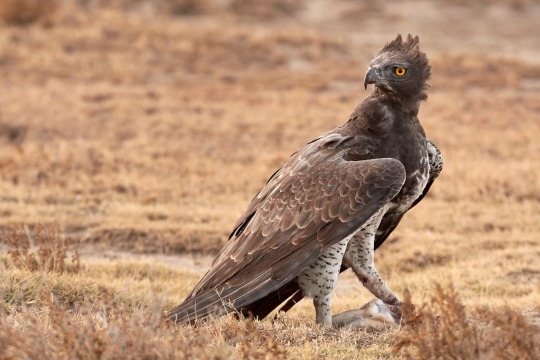
Martial Eagles (One Shown in Serengeti National Park) Occasionally Hunt Lion Cubs, New Rsearch Shows. Photograph By Klaus Nigge, National Geographic Image Collection
In December 2012, tour guides in Kenya’s Maasai Mara National Reserve witnessed a series of killings targeting one of the savannah’s top predators. An adult martial eagle followed a pride of lions for weeks, waiting for the right time to swoop in and kill three cubs in total.
“This is an eagle really looking at these lions and thinking, ‘I’m going to systematically hunt these lions,’” says R. Stratton Hatfield, a Ph.D. candidate at Wageningen University and Research in the Netherlands.
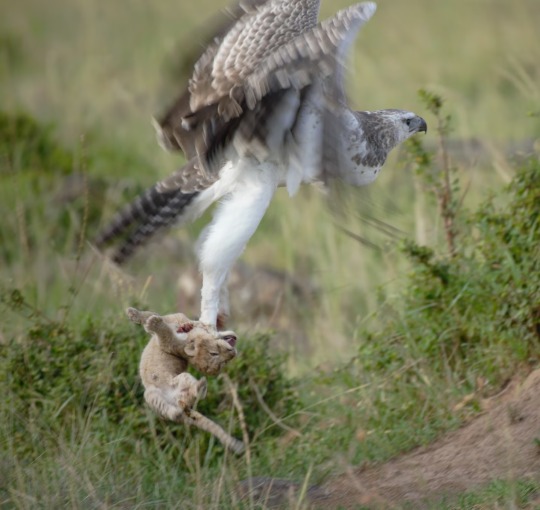
A Juvenile Martial Eagle snatched this three-week-old lion cub on March 15, 2019, in the Mara North Conservancy, Kenya. No one saw the bird kill the cub. Based on the fledgling eagle's behavior, researchers suspect that an adult female gave the cub to the fledgling. Photograph By Jes Lefcourt
While the supposed kings of the jungle may dominate the land around them, this incident and others like it show that African lions (Panthera leo) may not always sit on top of the food chain when it comes to the skies. In fact, martial eagles (Polemaetus bellicosus) likely prey on lion cubs when the opportunity arises, Hatfield and his colleagues recently reported in Ecology and Evolution.
“It’s really a testament to the predatory nature of martial eagles,” Hatfield says.
Queen of the Skies
Martial eagles’ wingspans can exceed six feet. Adult females weigh more than 10 pounds, while adult males typically weigh around seven pounds. Though comparable in size and ecology to golden eagles, the species often kills larger prey. The birds swoop in and dig their razor-like talons into their prey’s spine at the back of their skull, sometimes taking out young impalas or gazelles far above their weight class. “[Their talons] are just massive killing utensils,” Hatfield says. “From a predator perspective, they are impressive in what they’re able to do.”
Hatfield’s team only recently realized the birds also preyed on other predators. The team collected seven records, including the 2012 incident, that describe martial eagles preying on lion cubs, resulting in the deaths of nine cubs and one near miss. Most of these episodes probably involve larger females, Hatfield suspects, though two records included juveniles preying on cubs.
The earliest case comes from 2008, when a photographer captured an image of an eagle feeding on a freshly killed cub, while the most recent was in 2023, when a safari guide saw a juvenile eagle hunt and kill a cub large enough that the raptor couldn’t fly off with it.
Risk Versus Reward
Despite their aerial antics, martial eagles are typically risk averse. “When they go to take a lion cub, it’s with a lot of recognition of the risks,” Hatfield says. But not all records seem to show this careful calculation.
In the one failed killing, a martial eagle swoops in to snatch a six-week-old cub right next to its mother. The lioness spots the approaching danger, and “literally leaps in the air to try to take the martial out of the sky,” Hatfield describes. “You can just see the lioness’s eyes lock onto something, then she crouches and launches.”
The eagle dodged the counterattack, and didn’t get the cub, but the whole maneuver “was just stupid.” Hatfield speculates that the raptor didn’t see the lioness. Episodes like this are so dangerous for the eagle, “you wonder if they are doing something ever just for fun,” he says.
Amy Dickman, a conservation biologist at Oxford University in the U.K., isn’t surprised that eagles will go after cubs again and again if the strategy proves successful. She also leads Lion Landscapes, a nonprofit focused on coexistence of humans and wildlife in Kenya and Tanzania, and says the conclusions of Hatfield’s team “seem sound.”
As far as the lions are concerned, “it’s just another kind of risk that lions have to deal with,” Dickman says, like predation from hyenas or male lions from competing prides. While she doesn’t think the eagles pose a conservation threat to the big cats, an individual pride in a given area might feel pressure if a martial eagle has honed in on their cubs as a food source. “It shows you how interesting and diverse the natural world is,” Dickman says.
Predators or Prey?
Martial eagles aren’t picky when it comes to big cats. Some have taken cheetah and leopard kittens, as well. Hatfield also notes the risk probably goes both ways—lions could and probably have hunted adult eagles or nests. At least one YouTube video shows a leopard killing a martial eagle.
“The relationships between top predators at the top of the [food] pyramid are complicated,” Hatfield says.
Martial eagles are considered endangered by the International Union for Conservation of Nature, and Hatfield hopes that studies like this bring more attention to their plight. Like other large raptors in Africa, the species faces habitat loss, poaching for parts, electrocution on power lines and persecution.
“We are all so focused on the elephant and lion and rhino,” Hatfield says. “A lot of these big eagles and vultures are going to go extinct right in front of our eyes.”
57 notes
·
View notes
Text
Dandelion News - October 15-21
Like these weekly compilations? Tip me at $kaybarr1735 or check out my Dandelion Doodles on Patreon!
1. EV owners volunteer to drive voters to the polls in 11 states (and you can too)

“ChargeTheVote.org is a nonpartisan voter education and engagement initiative to enhance voter turnout in the 2024 election by providing zero-emission transportation in electric vehicles (EVs) to local polling locations. ChargeTheVote will also host a webinar for those who are interested in participating this coming Tuesday, October 22 at 7pm Eastern time.”
2. Kenya moves 50 elephants to a larger park, says it’s a sign poaching is low
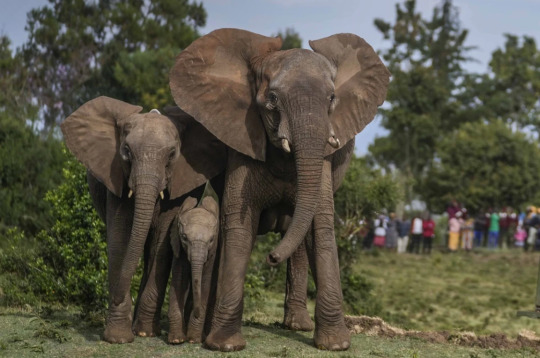
“The elephant population in the […”Mwea National Reserve”…] has flourished from its capacity of 50 to a whopping 156 […] requiring the relocation of about 100 of [them…. The] overpopulation in Mwea highlighted the success of conservation efforts over the last three decades.”
3. Australian start-up secures $9m for mine-based gravity energy storage technology

““We expect to configure the gravitational storage technology [which the company “hopes to deploy in disused mines”] for mid-duration storage applications of 4 to 24 hours, deliver 80% energy efficiency and to enable reuse of critical grid infrastructure.“”
4. Africa’s little-known golden cat gets a conservation boost, with community help

“[H]unting households were given a pregnant sow [… so that they] had access to meat without needing to trap it in the wild. […] To address income needs, Embaka started […] a savings and loan co-op[… and an] incentive for the locals to give up hunting in exchange for regular dental care.”
5. 4.8M borrowers — including 1M in public service — have had student debt forgiven

“That brings the total amount of student debt relief under the administration to $175 billion[….] The Education Department said that before Biden's presidency, only 7,000 public servants had ever received student debt relief through the Public Service Loan Forgiveness program. […] "That’s an increase of more than 14,000% in less than four years.””
6. Puerto Rico closes $861M DOE loan guarantee for huge solar, battery project
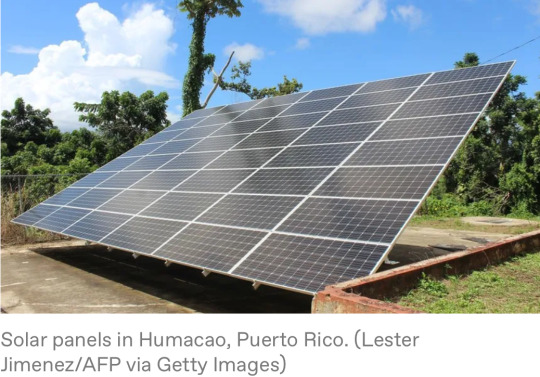
“The solar plants combined will have 200 megawatts of solar capacity — enough to power 43,000 homes — while the battery systems are expected to provide up to 285 megawatts of storage capacity. [… O]ver the next 10 years, more than 90 percent of solar capacity in Puerto Rico will come from distributed resources like rooftop solar.”
7. Tim Walz Defends Queer And Trans Youth At Length In Interview With Glennon Doyle
“Walz discussed positive legislative actions, such as codifying hate crime laws and increasing education[.… “We] need to appoint judges who uphold the right to marriage, uphold the right to be who you are [… and] to get the medical care that you need.””
8. Next-Generation Geothermal Development Important Tool for Clean Energy Economy
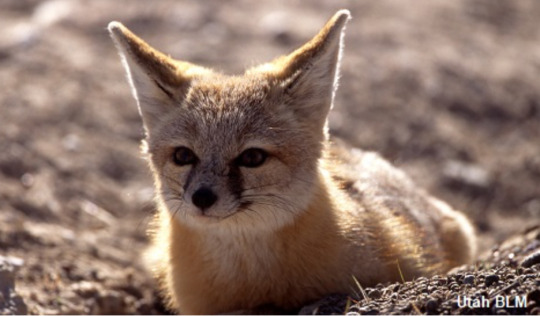
““The newest forms of geothermal energy hold the promise of generating electricity 24 hours a day using an endlessly renewable, pollution-free resource[… that] causes less disturbance to public lands and wildlife habitat […] than many other forms of energy development[….]”
9. Sarah McBride hopes bid to be first transgender congresswoman encourages ’empathy’ for trans people

““Folks know I am personally invested in equality as an LGBTQ person. But my priorities are going to be affordable child care, paid family and medical leave, housing, health care, reproductive freedom. […] We know throughout history that the power of proximity has opened even the most-closed of hearts and minds.”“
10. At Mexico’s school for jaguars, big cats learn skills to return to the wild
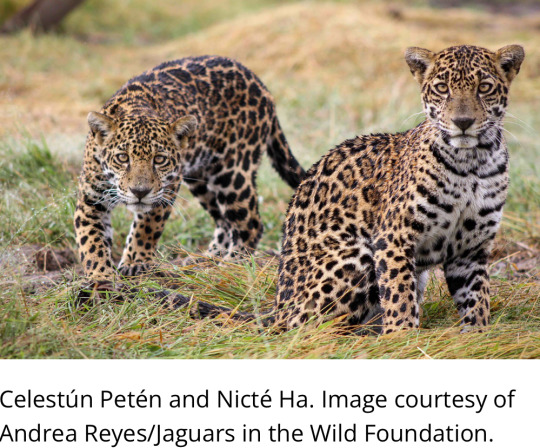
“[A team of scientists] have successfully released two jaguars, and are currently working to reintroduce two other jaguars and three pumas (Puma concolor). [… “Wildlife simulation”] “keeps the jaguars active and reduces the impact of captivity and a sedentary lifestyle[….]””
October 8-14 news here | (all credit for images and written material can be found at the source linked; I don’t claim credit for anything but curating.)
#good news#hopepunk#electric vehicles#voting#elephant#kenya#conservation#australia#battery#energy storage#africa#cats#hunting#tw animal death#student loans#student debt#debt relief#education#puerto rico#solar#solar panels#solar energy#solar power#tim walz#lgbt#lgbtq#geothermal#renewableenergy#trans rights#transgender
28 notes
·
View notes
Text

Excerpt from this story from the Associated Press (AP):
As a helicopter hovers close to an elephant, trying to be as steady as possible, an experienced veterinarian cautiously takes aim.
A tranquilizer dart whooshes in the air, and within minutes the giant mammal surrenders to a deep slumber as teams of wildlife experts rush to measure its vitals and ensure it’s doing OK.
Kenya is suffering from a problem, albeit a good one: The elephant population in the 42-square-kilometer (16-square-mile) Mwea National Reserve, east of the capital Nairobi, has flourished from its capacity of 50 to a whopping 156, overwhelming the ecosystem and requiring the relocation of about 100 of the largest land animals. It hosted 49 elephants in 1979.
According to the Kenya Wildlife Service Director General Erustus Kanga, the overpopulation in Mwea highlighted the success of conservation effort s over the last three decades.
“This shows that poaching has been low and the elephants have been able to thrive,” Kanga said.
Experts started relocating 50 elephants last week to the expansive 780-square-kilometer (301-square-mile) Aberdare National Park in central Kenya. As of Monday, 44 elephants had been moved from Mwea to Aberdare, with six others scheduled for Tuesday.
A second phase to relocate 50 other elephants is planned, but the date has not been disclosed.
The project has cost at least 12 million Kenyan shillings ($93,000), the wildlife agency said.
30 notes
·
View notes
Text

Check out our preemptive FAQ here!
Without further ado, here are the answers to your questions from the interest check:
☆ I would like to apply to be an art mod, but my Hetalia fanwork is a bit old and not up to date with my current skill level? Can I submit some non-Hetalia fanwork for my mod portfolio?
If this is the case, submit any work you're proud of, regardless of its relevancy to Hetalia!
☆ What does "spread" and "page" mean?
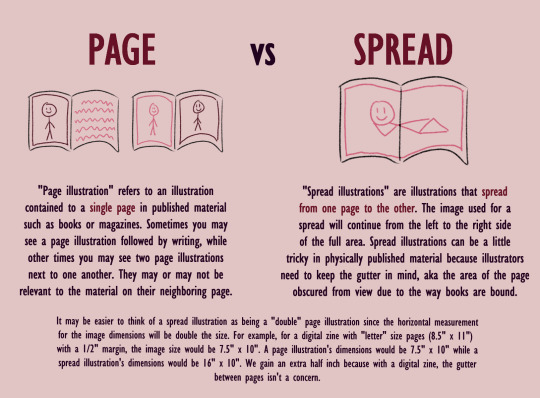
☆ Where do I sign up?
Contributor applications will be opening July 1, 2024. We’ll make a post with the link to the contributor apps at 3PM EST on July 1, but you’ll also be able to find a link to the apps on our Carrd when the time comes! Right now the button on our Carrd is a placeholder, but if you press it now, you’ll be rewarded with a cool and funky video :]
☆ Will page size/formatting guidelines be given?
Yes! At the moment, there are placeholder measurements in our info-doc. Proper formatting will be finalized before contributor apps open once we’ve onboarded our formatting mods and discussed what sizes are best!
☆ Can my contribution include multiple HetaGirls?
YES!!! Let them interact!
☆ Are ships allowed?
Yes! As of right now, our only restrictions are no Belarus x Ukraine and no NSFW content.
☆ How many contributors will you accept to the zine?
At the moment, we’re a bit unsure! This is both Soph and Arson’s first time hosting a zine so we don’t want to bite off more than we can chew. As of right now, we may accept up to ~30 visual contributors and ~10 writing contributors, but those are estimates. We’ve gotten a ton of support for this zine, but we need to find our footing first! Ultimately, the final number of contributors will depend on what the mod team feels they can handle and how many applications we get!
☆ Why are you putting limits onto how Nyotalia characters can appear in the zine?
This zine originally came to be with the canon women in mind. We want the zine to focus on Ancient Egypt, Belarus, Belgium, Czechia, Hungary, Liechtenstein, Monaco, Seychelles, Taiwan, Ukraine, Vietnam, and Wy, as much of their canon material treats them as supporting roles to the male characters. We additionally would love to see submissions for Ancient Greece, Kenya, and Zimbabwe!
The Nyotalia characters are understandably very popular because they're a different take on the main cast. While we also love Nyotalia, we worry that very popular characters, like the main 8, will overshadow the characters we created this zine for in the first place. Nyotalia women are allowed in supporting roles because it would understandably be a little difficult for the writers if they were only limited to a specific set of 12-17 characters.
Some examples of work featuring Nyotalia characters would be:
A frying pangle fic where Hungary interacts with Nyo!Austria and/or Nyo!Prussia
A group illustration centering Vietnam’s interactions with Nyotalia ASEAN
An AmeBela illustration where Belarus interacts with Nyo!America
Some exceptions may be allowed on a case by case basis.
TLDR: You can draw Nyotalia women so long as they play a supporting role to one of the canon ladies.
☆ How many OCs will be allowed?
It depends on how many applications we receive! So long as they're a nation & aren't already canon to Hetalia, it's fair game. We want to see ladies from all over the globe!
☆ Why do you want more than one pitch?
We don't want to force people to make work they're disinterested in, but we also don't want there to be a disproportionate amount of material for one girl over another. As of right now, Hungary is in the most demand with 69.2% of responses, but Wy (34.6%) and Monaco (42.3%) have the least amount! We want to encourage more work for the more neglected ladies!
☆ Can I make more than one submission?
As of right now, yes! So long as everyone isn't doing more than one piece and if the contributor thinks they can handle two pieces during the time frame, we wanna see those HetaGirls!
More on this to come when acceptances roll out and we start working on pitches...
Got more questions? Submit them to our inbox!
Thank you all for the love and support you've shown the zine thus far!
27 notes
·
View notes
Text
✨ 15 days of Princess Anne ✨
August is Princess Anne’s birth month and her 73rd birthday is on the 15th so until then we will look at her fascinating life, one photo for every year!
The nineties

1990 Princess Anne, Peter Phillips and Zara Phillips meeting members of the Scotland team before kick off at the Five Nations match between Scotland and England at Murrayfield on 17th March 1990.

1991 Princess Anne and Luciano Pavarotti at a horse trial in Modena, Italy on 16th September 1991.

1992 Just one photo wouldn’t do 1992 justice!
1. A very happy, newly divorced Princess Anne, toasting with Champagne a day after her divorce, aboard Pride of Teesside yacht, Southhampton, on 22nd April 1992.
2. Princess Anne and Commander Tim Laurence’s first public appearance as a couple, just a few days after her divorce was finalised from Phillips, dancing at the Caledonian Ball, on 8th May 1992.
3 & 4. Princess Anne and her new husband Commander Tim Laurence at their low-key wedding at Crathie Kirk Church in Balmoral on 12th December 1992.
5. A not so pleased looking Princess Anne on her way into her first engagement (three days) after her wedding to Commander Laurence at Church House to visit the National Association of Victims Support, on 15th December 1992.
6. Princess Anne and her new husband Tim Laurence at St Mary Magdalene Church to attend Christmas morning service on 25th December 1992.

1993 Princess Anne and Timothy Laurence visiting Mongolia, their first royal trip as a married couple in July 1993.

1994 Princess Anne firing the starting pistol to begin the first race after opening the Velodrome National Cycling Centre in Manchester in September 1994 (what a reaction pic lol)

1995 Princess Anne, Tim Laurence, Peter and Zara Phillips at the Jackie Stewart Celebrity Challenge at Gleneagles, Scotland on 1st July 1995.

1996 Princess Anne and Tim Laurence watch Peter Phillips playing in a Scottish Schools rugby match in Bridgend, South Wales on 5th January 1996.

1997 Princess Anne wiping away a tear after the decommissioning ceremony for The Royal Yacht Britannia in Portsmouth on 11th December 1997.

1998 Princess Anne greeting an elderly woman at the ICRC hospital in Lokichokio, Kenya on 29th September 1998.

1999 Princess Anne as Colonel of the Blues And Royals, riding for the first time in the Trooping of the Colour procession on 12th June 1999.
49 notes
·
View notes
Text
Next week, United Nations Secretary-General António Guterres will deliver recommendations to the Security Council on protecting civilians in Sudan. Few moments could be more important during this vicious conflict. We fear it is on the road to becoming a repeat of the 1994 Rwanda genocide.
The war in Sudan is a cruel struggle across the vast expanses of the country between the Rapid Support Forces (RSF), a collection of paramilitaries, mercenaries, and allied militias, and the Sudanese Armed Forces (SAF), Sudan’s official military. The RSF was once known as the janjaweed, the notorious devils on horseback responsible for the worst atrocities of the 2003-2005 Darfur genocide, and for the past five months, the RSF and its allies have been laying siege to El Fasher, the capital of North Darfur.
We know that the creation of a full-fledged, multidimensional peacekeeping mission isn’t politically feasible at this moment. But the gravity of the situation calls for the consideration of innovative ideas, many of which have been suggested by Sudanese voices, human rights experts, and peacekeeping specialists.
A nimble multinational or African Union-led protection force with troops provided by willing countries could be mounted with a mandate to protect civilians. The recent deployment of a Kenya-led multinational force in Haiti demonstrates that missions with specialized mandates can be established. With 2.8 million people in and around El Fasher trapped with no option to escape or receive assistance, and with the possibility of ethnically targeted killing on the horizon, the U.N. must act now.
We both have spent years grappling with the Rwandan tragedy. One of us was the force commander who led the U.N. Assistance Mission for Rwanda (UNAMIR) leading up to and during the 1994 genocide and authored a book called Shake Hands with the Devil. The other was a researcher for the investigative report into the genocide by the African Union (then known as the Organization of African Unity) and a member of the Inter-Congolese Dialogue negotiation team in 2000-2002.
Bitter experience has taught us that mass atrocities are only a surprise to those who aren’t paying attention.
‘‘Each case of modern genocide has taken the world by surprise,” the African Union report into the Rwanda Genocide concluded. “Even when, in retrospect, it is clear that unmistakable warning signs and statements of intent were there in advance for all to see.”
We must heed the warning signs.
RSF forces have burned dozens of villages of the ethnic Zaghawa people. Famine has been declared in parts of North Darfur. Local militias and armed groups allied with the SAF have so far been able to hold off capture of the city by the RSF. But both the RSF and the SAF have routinely engaged in attacks against civilians and civilian infrastructure. No one is safe.
If El Fasher falls, the RSF would be free to conduct a wave of ethnically targeted killing that could be much larger and more lethal than anything it has done before during the 18-month war in Sudan.
“The world cannot afford to stand idly by as El Fasher descends into chaos,’’ said Alice Wairimu Nderitu, U.N. special advisor on the prevention of genocide. ‘‘We act now to prevent a disaster of unimaginable proportions.’’
A harrowing new report from the U.N. Independent International Fact-Finding Mission (FFM) on Sudan accuses both sides of ‘‘large-scale violations’’ of human rights and international humanitarian law. ‘‘Many of these violations amount to international crimes,’’ the report stated.
The report is explicit that ‘‘children are paying a very heavy toll in the conflict.’’ Both the SAF and the RSF are accused of killing and maiming children, as well as attacking schools and hospitals. The RSF has recruited and used children in hostilities and committed rape and other forms of sexual violence against them. The report cited ‘‘multiple credible reports’’ that the SAF ‘‘has played a role in the training and arming of children who have joined the popular mobilization.’’
In Darfur, the RSF has conducted a wave of ethnically motivated violence against non-Arab groups that some have concluded amounts to genocide. In an April report, the Raoul Wallenberg Centre argued that ‘‘clear and convincing evidence’’ revealed that the RSF and its allied militias ‘‘have committed and are committing genocide against the Masalit’’ people.
In June, the U.N. Security Council adopted Resolution 2736, which cited ‘‘credible reports of ethnically motivated violence’’ committed by the RSF in El Fasher and the West Darfur capital of El Geneina, between April 24, 2023, and June 19, 2023. The El Geneina killings provide a preview of what the RSF has planned for El Fasher in North Darfur.
During the El Geneina campaign, the RSF committed ‘‘killings, torture, and other forms of cruel, inhuman, or degrading treatment or punishment, including rape and other forms of sexual violence, as well as looting, pillage, and destruction of objects indispensable to the survival of the civilian population,’’ according to the FFM report. One estimate put the number of deaths in El Geneina between 10,000 and 15,000.
In her address before the Security Council in August, Sudanese expert Kholood Khair called for a ‘‘mission to protect civilians,’’ noting the ‘‘vast majority of Sudanese people entirely exposed during the ongoing conflict, and vulnerable to atrocities committed by the RSF, SAF, and allied militias.’’ Citing a ‘‘total absence of protection for women and girls,’’ more than 250 Sudanese and African women signed an open letter calling for international and regional actors to ‘‘close the protection gap.’’
In his report providing civilian protection recommendations, which he will deliver on Monday, it is imperative that Guterres pushes for the establishment of an independent and impartial force with a strong mandate even in the absence of a cease-fire.
The multinational force we are proposing in Sudan could, initially, have targeted responsibilities to establish safe ‘‘green zones’’ or safe corridors for civilians to facilitate the delivery of lifesaving aid. It could support local self-protection efforts and establish boundaries to safeguard agricultural activities. Only fully vetted personnel subject to civilian oversight should be deployed.
Over time, the force could expand to encompass other responsibilities. It could monitor violations of human rights and international humanitarian law, as well as address the war’s systematic use of rape as a weapon and grave violations against children. It could collaborate with the local responders who are doing heroic work to aid Sudanese people in distress, notably the mutual aid networks (and Nobel Peace Prize nominees) known as emergency response rooms. It could engage in data gathering, creating monitoring and early warning systems, and offer support for civilian and civil society documentation of war crimes and human rights violations.
In the long run, the force could partner with and support a broad peace process, assist in the reimposition of civilian governance, and contribute to the creation of accountability mechanisms. The challenges facing Sudan are many. But we know that a durable peace will come only when the men with guns are supplanted by Sudanese civilians, including women, youth, and other underrepresented groups, who are free to build a society of equity and inclusion.
Guterres has the opportunity to make a bold choice on Sudan. He should call upon the Security Council to take swift action to protect a desperate population ravaged by war.
The U.N. made a tragic mistake in waiting too long to respond to the genocide in Rwanda. It must not do so again.
4 notes
·
View notes
Text
2024 olympics Uganda roster
Athletics
Andrew Kwemoi (Kampala)
Tarsis Orogot (Soroti)
Tom Dradiga (Arua)
Oscar Chelimo (Kween)
Jacob Kiplimo (Kween)
Joshua Cheptegei (Kapsewui)
Martin Kiprotich (Kampala)
Leonard Chemutai (Kapchorwa)
Victor Liplangat (Kampala)
Stephen Kissa (Kapchorwa)
Annet Chelangat (Kampala)
Halimah Nakaayi (Seeta Township)
Winnie Nanyondo (Kampala)
Esther Chebet (Kapchorwa)
Belinda Chemutai (Bukwo)
Joy Cheptoyek (Kampala)
Sarah Chelangat (Kampala)
Peruth Chemutai (Bukwo)
Mercyline Chelangat (Kericho, Kenya)
Sgt. Rebecca Ayeko (Endebess, Kenya)
Stella Chesang (Kween)
Cycling
Charles Kagimu (Kampala)
Rowing
Kathleen Noble (Salt Lake City, Utah)
Swimming
Jesse Ssengonzi (Cary, North Carolina)
Gloria Muzito (Sundsvall Stad, Sweden)
0 notes
Text
At least 17 young children were killed in a fire that ripped through their primary school dormitory in central Kenya overnight, with initial reports Friday indicating it was overcrowded in breach of safety standards.
The blaze in Hillside Endarasha Academy in Nyeri county broke out at around midnight, police said, engulfing rooms where more than 150 children were sleeping.
Police said the average age of the victims was around nine years old.
"There are 17 fatalities from this incident and there are also others who were taken to hospital with serious injuries," national police spokesperson Resila Onyango told AFP.
"The bodies recovered at the scene were burnt beyond recognition," she said.
"More bodies are likely to be recovered once (the) scene is fully processed," she added.
Kenya's Citizen TV showed images of what appeared to be the aftermath of the blaze, with blackened corrugated iron roofing that had collapsed in on itself.
The cause of the fire was not yet known.
But Kenya's National Gender and Equality Commission said initial reports indicated the dormitory was "overcrowded, in violation of safety standards" and called for an immediate inquiry.
President William Ruto, currently in Bejing for a China-Africa summit, expressed his condolences in a post on X.
"Our thoughts are with the families of the children who have lost their lives in the fire tragedy," he said.
"This is devastating news."
Ruto instructed officials to "thoroughly investigate this horrific incident", and promised that those responsible will be "held to account".
The school, which caters for about 800 pupils, is located in a semi-rural area around 170 kilometres (100 miles) north of the capital Nairobi.
Around 100 parents were gathered outside the gates of the school, an AFP journalist at the scene reported, anxiously waiting for updates on their children.
The dormitory was sealed off by yellow police tape, with officers stationed at all access points.
'Heartbreaking'
The Kenyan Red Cross said it was on the ground assisting a multi-agency response team.
In a post on X, it said it was "providing psychosocial support services to the pupils, teachers and affected families".
"Heartbreaking news from Kenya as a school fire has caused devastation. Our thoughts are with all affected," said Jagan Chapagain, secretary general of the International Federation of Red Cross and Red Crescent Societies.
There have been numerous school fires in Kenya and across East Africa.
In 2016, nine students were killed by a fire at a girls' high school in the sprawling slum neighbourhood of Kibera in Nairobi.
In 2001, 67 pupils were killed in an arson attack on their dormitory at the Kyanguli Mixed Secondary School David Mutiso in Kenya's southern Machakos district.
Two pupils were charged with the murder, and the headmaster and deputy of the school were convicted of negligence.
In 1994, 40 school children were burned alive and 47 injured in a fire that ravaged the Shauritanga Secondary School for Girls in the northern region of Kilimanjaro in Tanzania.
4 notes
·
View notes
Text
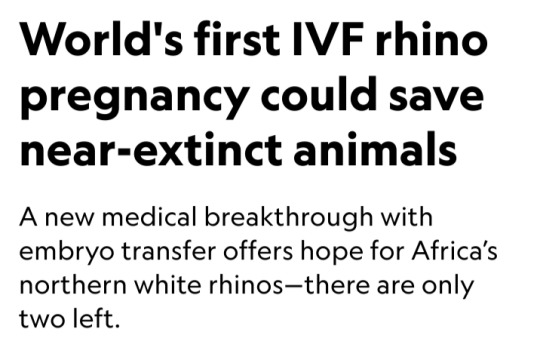
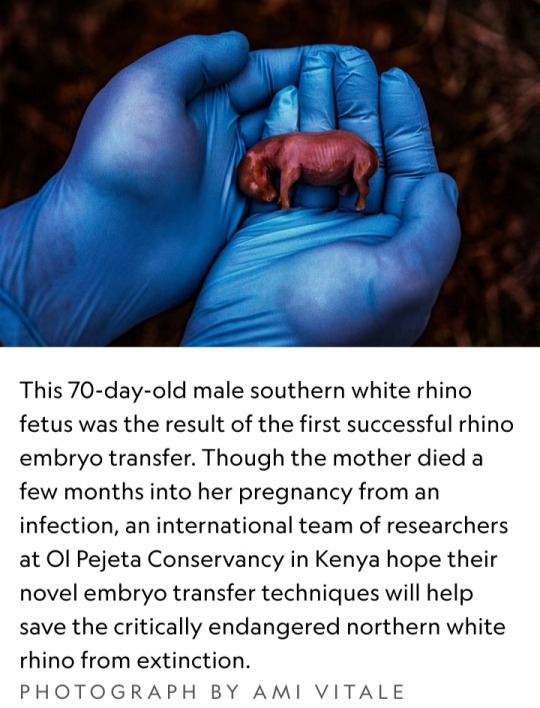
By Dina Fine Maron
January 24, 2024
Scientists have cleared a significant hurdle in the years-long effort to save Africa’s northern white rhinoceros from extinction with the first-ever rhino pregnancy using in vitro fertilization.
The lab-assisted pregnancy, which researchers will announce today, involved implanting a southern white rhino embryo in a surrogate mother named Curra.
The advance provides the essential “proof of concept” that this strategy could help other rhinos, says Jan Stejskal of the BioRescue project, the international group of scientists leading this research.
Curra died just a couple months into her 16-month pregnancy from an unrelated bacterial infection, Stejskal says.
However, the successful embryo transfer and early stages of pregnancy pave the way for next applying the technique to the critically endangered northern white rhino.
The process was documented exclusively by National Geographic for an upcoming Explorer special currently slated to air in 2025 on Nat Geo and Disney+.
BioRescue expects to soon implant a northern white rhino embryo into a southern white rhino surrogate mother.
The two subspecies are similar enough, according to the researchers, that the embryo will be likely to develop.
Eventually, this approach may also help other critically endangered rhinos, including the Asian Javan rhinoceros and the Sumatran rhinoceros, which each now number under 100 individuals, Stejskal says.
But the northern white rhino’s current situation is the most pressing by far.
There are no males left, and the only two remaining animals are both elderly females that live under armed guard on a reserve in a 700-acre enclosure in Kenya called Ol Pejeta Conservancy.
The boxy-jawed animals once roamed across central Africa, but in recent decades, their numbers have plummeted due to the overwhelming international demand for their horn, a substance used for unproved medicinal applications and carvings.
Made from the same substance as fingernails, rhino horn is in demand from all species, yet the northern white rhino has been particularly hard-hit.
"These rhinos look prehistoric, and they had survived for millions of years, but they couldn’t survive us,” says Ami Vitale, a National Geographic Explorer and photographer who has been documenting scientists’ efforts to help the animals since 2009.
“If there is some hope of recovery within the northern white rhino gene pool — even though it’s a substantially smaller sample of what there was — we haven’t lost them,” says conservation ecologist David Balfour, who chairs the International Union for the Conservation of Nature’s African rhino specialist group.
Blueprints for rhino babies

To stave off the animal’s disappearance, BioRescue has used preserved sperm from northern white rhinos and eggs removed from the younger of the two remaining females.
So far, they’ve created about 30 preserved embryos, says Thomas Hildebrandt, the head scientist of BioRescue and an expert in wildlife reproduction based at the Leibniz-Institute of Zoo and Wildlife Research in Berlin.
Eventually, the team plans to reintroduce northern white rhinos into the wild within their range countries.
“That’d be fantastic, but really, really far from now—decades from now,” says Stejskal.
Worldwide, there are five species of rhinoceros, and many are in trouble.
Across all of Africa, there are now only about 23,000 of the animals, and almost 17,000 of them are southern whites.
Then there are more than 6,000 black rhinos, which are slightly smaller animals whose three subspecies are critically endangered.
In Asia, beyond the critically endangered Javan and Sumatran rhinos, there’s also the greater one-horned rhino, whose numbers are increasing and currently are estimated to be around 2,000.
The BioRescue effort has experienced many setbacks, and even though the team now has frozen embryos, the clock is ticking.
The researchers intend to use southern white rhinos as surrogate moms for the northern white rhino embryos.
However, scientists want any northern white rhino calves to meet and learn from others of their kind, which means they need to be born before the two remaining females die.
“These animals learn behaviors — they don’t have them genetically hard-wired,” says Balfour, who’s not involved with the BioRescue work.
But birthing new animals in time will be a challenge.
“We’re really skating on the edge of what’s possible,” he says, “but it’s worth trying.”
Najin, the older female, will be 35 this year, and Fatu will be 24.
The animals, which were born in a zoo in the Czech Republic, are expected to live to about 40, says Stejskal, who also serves as director of international projects at the Safari Park Dvůr Králové, the zoo where the animals lived until they were brought to Kenya in 2009.
Impregnating a rhino
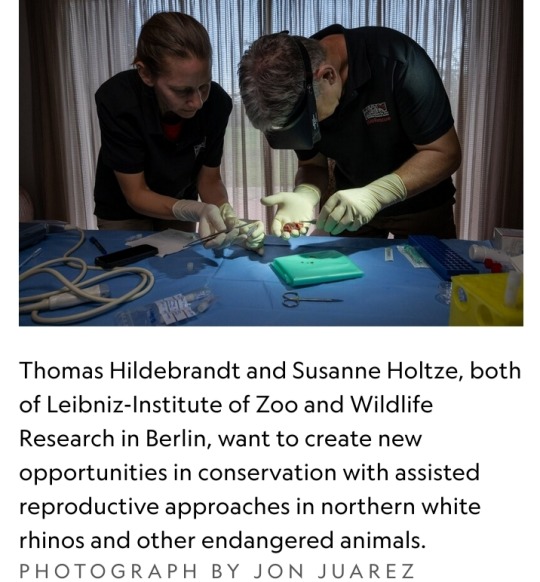
The next phase of BioRescue’s plan involves implanting one of their limited number of northern white rhino embryos into a southern white rhino surrogate mother — which the group plans to do within the next six months, Stejskal says.
They’ve identified the next surrogate mother and set up precautions to protect her from bacterial infections, including a new enclosure and protocols about disinfecting workers’ boots.
But now, they must wait until the female rhino is in estrus — the period when the animal is ready to mate — to implant the egg.
To identify that prime fertile time, they can’t readily perform regular ultrasounds at the conservancy as they might do in a zoo.
Instead, they have enlisted a rhino bull that has been sterilized to act as a “teaser” for the female, Hildebrandt says, adding that they must wait a few months to make sure that their recently sterilized male is truly free of residual sperm.
Once the animals are brought together, their couplings will alert conservancy staff that the timing is right for reproductive success.
The sex act is also important because it sets off an essential chain of events in the female’s body that boosts the chances of success when they surgically implant the embryo about a week later.
"There’s little chance the conservancy staff will miss the act. White rhinos typically mate for 90 minutes," Hildebrandt says.
What’s more, while mounted on the females, the males often use their temporary height to reach tasty plant snacks that are generally out of reach.
Boosting genetic diversity

With so few northern white rhinos left, their genetic viability may seem uncertain.
But the BioRescue team points to southern white rhinos, whose numbers likely dropped to less than 100, and perhaps even as few as 20, due to hunting in the late 1800s.
Government protections and intense conservation strategies allowed them to bounce back, and now there are almost 17,000.
“They have sufficient diversity to cope with a wide range of conditions,” says Balfour.
Researchers don’t know exactly how many southern white rhinos existed a century ago, he says, but it’s clear that the animals came back from an incredibly low population count and that they now appear healthy.
Beyond their small collection of embryos, the BioRescue team hopes to expand the northern white rhino’s gene pool by drawing from an unconventional source — skin cells extracted from preserved tissue samples that are currently stored at zoos.
They aim to use stem cell techniques to reengineer those cells and develop them into sex cells, building off similar work in lab mice.
According to their plan, those lab-engineered sex cells would then be combined with natural sperm and eggs to make embryos, and from there, the embryos would be implanted into southern white rhino surrogate mothers.
Such stem cell reprogramming work has previously led to healthy offspring in lab mice, Hildebrandt says, but rhinos aren’t as well-studied and understood as mice, making this work significantly challenging.
A global effort
The northern white rhino revitalization venture has cost millions of dollars, supported by a range of public and private donors, including the German Federal Ministry of Education and Research.
Other partners on the effort include the Leibniz Institute for Zoo and Wildlife Research, the Czech Republic’s Safari Park, Kenya Wildlife Service, Ol Pejeta Conservancy, and also Katsuhiko Hayashi, a professor of genome biology at Osaka University in Japan who conducted the mouse stem cell research.
Building upon Hayashi’s stem cell techniques could ultimately bring the northern white rhino gene pool up to 12 animals — including eggs from eight females and the semen of four bulls, according to Stejskal.
An alternative approach to making more babies, like crossbreeding northern and southern white rhinos, would mean the resulting calves wouldn’t be genetically pure northern white rhinos, Hildebrandt notes.
The two subspecies look quite similar, but the northern version has subtle physical differences, including hairier ears and feet that are better suited to its swampy habitat.
The two animals also have different genes that may provide disease resiliency or other benefits, Hildebrandt says.
There are unknown potential differences in behavior and ecological impact when populating the area with southern white rhinos or cross-bred animals.
"The northern white rhino is on the brink of extinction really only due to human greed,” Stejskal says.
“We are in a situation where saving them is at our fingertips, so I think we have a responsibility to try.”
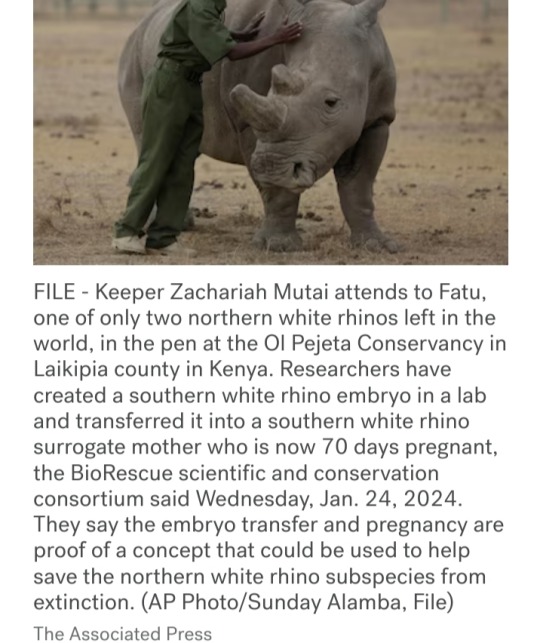
🩶🦏🩶
#northern white rhinoceros#rhino embryo transfer#in vitro fertilization#IVF#southern white rhinoceros#critically endangered animals#National Geographic#BioRescue#rhino horn#International Union for the Conservation of Nature#African rhino specialist group#Thomas Hildebrandt#German Federal Ministry of Education and Research#Leibniz Institute for Zoo and Wildlife Research#Kenya Wildlife Service#Ol Pejeta Conservancy#Katsuhiko Hayashi#genome biology#IVF rhino pregnancy
10 notes
·
View notes
Text
"Fencing offers a ray of hope to young people living in Nairobi's poorest neighbourhoods.
Despite a lack of equipment, the sword fighting sport is growing in popularity in Kenya.
They cut a striking group as they wander through Huruma in their pristine white outfits.
These young people are heading for their favourite hang-out spot: the Tsavora Fencing club at the local community centre.
The street becomes their arena as they parry and riposte in front of passers-by.
This is not just a hobby for them: it's a force for good in their lives.
Fencing has helped carve a path away from crime, drugs and other social pressures.
"I used to be a gangster," says Mburu Wanyoike, who is now a coach for Kenya's National Fencing team.
"I was in crime and crime makes you feel isolated. It actually puts you in a place where you are isolated, making you feel depressed, having stress and I chose fencing as a way for me to escape out of the hood and escape that lifestyle."
His journey from delinquency to fencing coach and senior athlete in Kenya's national team has been transformative.
Inspired by the personal tragedy of the death of two friends, Wanyoike pursued training and education in South Africa, ultimately founding Tsavora Fencing in 2021.
Tsavora Fencing has made significant strides.
The team has produced 15 talented fencers who have earned spots in the national squad, with plans to represent Kenya in the African Olympic Qualifiers in Algeria this year.
However, challenges persist, particularly regarding the affordability of fencing equipment.
"Sometimes it is tough when it comes to competing with well-equipped international countries that are well organized, so what we do is just to move on with enthusiasm and obsession. The fact that we don't have the equipment, the limited ones we have, we use them. We don't complain that we do not have equipment, we just use what we got and put in the obsession and the enthusiasm and the passion combined, that's what we do, we fence," says Wanyoike.
Tsavora Fencing Mtaani, an initiative under Tsavora Fencing, offers mentorship and training in fencing to the youth of these impoverished neighbourhoods, shielding them from the dangers of their environment.
With 45 members, most of whom are students, the team serves as a beacon of hope in the community.
Participants are required to become disciplined and put on integrity.
"Initially I had bad company at home but now that I am in fencing, it has kept me busy and now it is a better option for me because I feel happy doing it," says Jemimah Njeri, a 17-year-old member of Tsavora Fencing.
"I cannot imagine myself without this sport because it has kept me very busy. In my area many girls have become teenage mothers and that is not a wonderful life," adds 16-year-old Allen Grace...
As Tsavora Fencing continues to thrive, fuelled by the determination of its members and the support of the community, it stands as a testament to the transformative power of sport in, even the most challenging environments."
-via Africanews, April 1, 2024
323 notes
·
View notes
Text
HOW TO EARN WITH STREAMQASH AGENCIES HOW TO JOIN STREAMQASH AGENCIES *🇰🇪💥🔥NEW NEW BANGER🎉NEWEST MONEY DEAL IN TOWN
📌STREAMQASH AGENCIES !! 🔥💥*
*🇰🇪STREAMQASH AGENCIES KENYA🇰🇪*
*♻️Launched ON 12TH OCTOBER 2024 at 02:00Pm E.A.T💸🧿*
📌 *ACCOUNT ACTIVATION FEE IS KSH 550🇰🇪* 🗝️🤝
*🎯 VARIOUS WAYS OF MAKING MONEY IN STREAMQASH AGENCIES 🎉🎉*
*1️⃣.🪙AFFILIATE MARKETING*💶🎊
This program will allow you to earn over KSH.4000/ = per day by inviting/recruiting friends via your link🪄🛒
*This is how you will be able to make cash upto three levels daily✍🏻*
*♨️Level 1 = KSH.300 / =*
*♨️Level 2 = KSH.150 / =*
*♨️Level 3 = KSH.50 / =*
📌 *Build your team and Earn best agent rewards on weekly bonuses And be ranked every sunday🥳🥳*
*2️⃣.* 🧭 *WELCOME BONUS*✨🛍️
Every member who creates an account in STREAMQASH will be awarded a free redeemable bonus of KSH.150💰〽️
*3️⃣* *🎉 INSTAGRAM REELS💰📹*
watch an entertaining Instagram
Reel of , be promoted and get paid at the same time.
*4️⃣* *🎦 YOUTUBE VIDEOS* 📺📯
Watch various educa YouTube videos which will be uploaded on our platform and get paid tiveper video. 💰💷🤑🔥🤑💥
5️⃣ *🎦 TIKTOK VIDEOS 🎊*
Funny and educative TikTok videos will be posted on the dashbord and get paid on weekly basis🎉.
*6️⃣* *〽️🔰TRIVIA QUETIONS🧲🎊*
Simple questions choiceconcerning various topics will be uploaded in your dashbord and when answered correctly get paid🔥💷💰
*7️⃣*. *▶️ ADS clicking 🤹♀️*
Here various ads will be uploaded in your active dashbord and earn whenever you click the Ads🤑
*8️⃣* *🎉 EBOOKS 🎉🎗️*
*Free and premium books*
Here we shall give basic free and premiumdepending on the day, the financial Ebooks will cover general knowledge on networking strategies which will be uploaded on active dashboards books 🎊
*9️⃣* *〽️ADVANCED FOREX SIGNALS〽️*
Forex market Marketplace for exchanging national currencies. We give basic Forex classes for beginners and build your confidence in trading Forex, remember you can also be given a chance to trade with both demo & live accounts🤑.
1️⃣0️⃣ *🥇🎁TOURNAMENTS🏆*tasks
We are thrilled to have you as part of our vibrant community! At streamQash, we believe in recognizing and rewarding our most is globaldedicated members on performance.
*HOW TO JOIN STREAMQASH AGENCIES
✳️Tap the 👇 OFFICIAL JOINING Link
🔰Have a unique username✍🏻, 🔰Have a valid email📌*♻️Use a password you can easily remember✅**🔰Finish registration 🔰 Make payment 💵PAYMENT PROCEDURE PROVIDED ON THE SITE
IF YOU FACE ANY CHALLENGES DURING REGISTRATION OR ACTIVATION CONTACT OUR CUSTOMER CARE
+254795812157

*Added advantages🥳*
📌Automatic activations
📌24/7 customer supported in all countries👩👩👧💻
*ALL you need is an activation fee of KSH. 550 to get started*
*_Available WorldWide🌍_〽️ 🔥*
#entrepreneur#marketing#home#branding#investing#affiliatemarketing#make money online#work from home#worldbuilding
2 notes
·
View notes